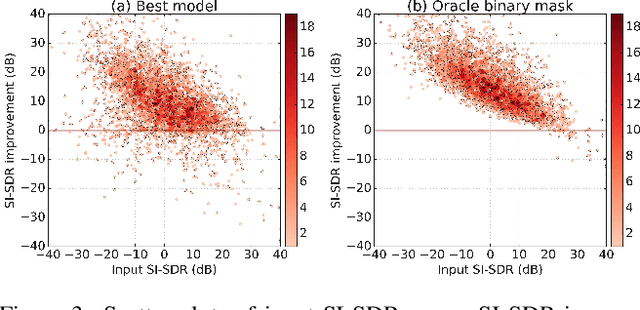Universal Sound Separation
Paper and Code
May 08, 2019



Recent deep learning approaches have achieved impressive performance on speech enhancement and separation tasks. However, these approaches have not been investigated for separating mixtures of arbitrary sounds of different types, a task we refer to as universal sound separation, and it is unknown whether performance on speech tasks carries over to non-speech tasks. To study this question, we develop a universal dataset of mixtures containing arbitrary sounds, and use it to investigate the space of mask-based separation architectures, varying both the overall network architecture and the framewise analysis-synthesis basis for signal transformations. These network architectures include convolutional long short-term memory networks and time-dilated convolution stacks inspired by the recent success of time-domain enhancement networks like ConvTasNet. For the latter architecture, we also propose novel modifications that further improve separation performance. In terms of the framewise analysis-synthesis basis, we explore using either a short-time Fourier transform (STFT) or a learnable basis, as used in ConvTasNet, and for both of these bases, we examine the effect of window size. In particular, for STFTs, we find that longer windows (25-50 ms) work best for speech/non-speech separation, while shorter windows (2.5 ms) work best for arbitrary sounds. For learnable bases, shorter windows (2.5 ms) work best on all tasks. Surprisingly, for universal sound separation, STFTs outperform learnable bases. Our best methods produce an improvement in scale-invariant signal-to-distortion ratio of over 13 dB for speech/non-speech separation and close to 10 dB for universal sound separation.
 Add to Chrome
Add to Chrome Add to Firefox
Add to Firefox Add to Edge
Add to Edge